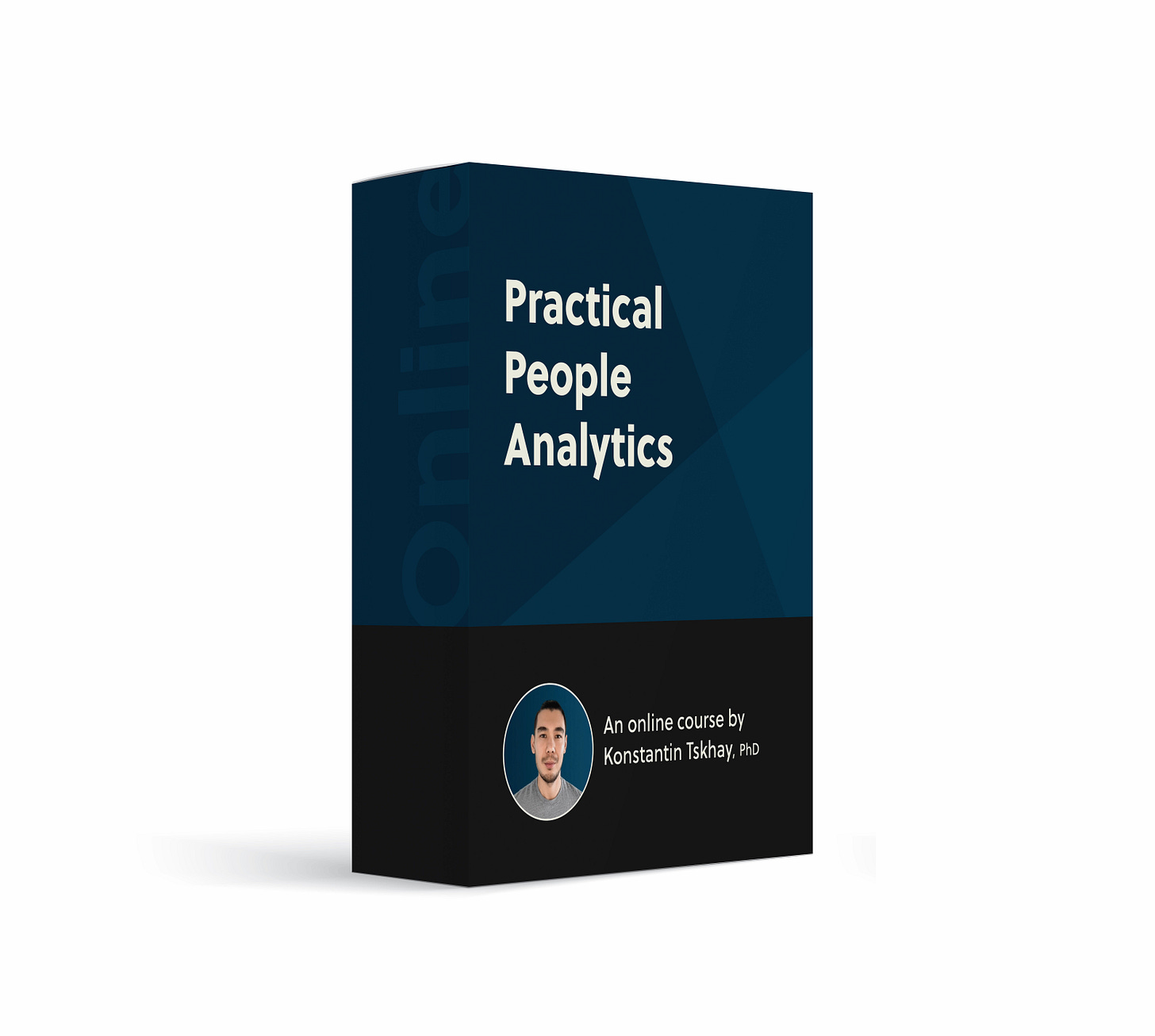Hi, Friends,
Almost 10 months ago, I pledged to teach 10,000 HR Professionals People Analytics.
So, I started writing online, created an online course, and re-vived this newsletter. I spoke at conferences and coached HR leaders, was a guest on podcasts, and answered questions in different HR communities (Resources for Humans and TPPG).
I don’t think we are anywhere near 10k yet. But…
Thank you for supporting my content and my mission.
It helps me and all of us to create a new future for HR.
So, today, I want to speak about Data Literacy. And specifically, a recap webinar by Insight222 discussing the importance of data literacy for HR.
We will start with data literacy findings
Go into how to develop data literacy
And finish with what not to do
Let’s go.
Data Literacy Findings from the Webinar
Last week, David Green, Naomi Verghere, and Courtney McMahon discussed how data literacy and people analytics are the fastest way to gain credibility from the business.
That is not a coincidence.
Traditionally, HR is not associated with numbers and statistics, and we hear time and again the same questions coming out of HR:
How do I influence stakeholders?
What should I have on my HR dashboard?
This is not to say that HR professionals are bad at math. Most are not trained in its application to HR. And that is the core of the problem.
In the new age where AI is no longer new and people's data are everywhere, we need to ensure that when we walk into the room, we have the data to support all recommendations. We need to live by the rule:
You cannot have data without recommendations
You cannot have recommendations without data
In other words, we can no longer accept HR without data.
This is what the Insight222 webinar is talking about:
By 2030, data literacy will be the most in-demand skill
85% of HR Leaders/CHROs believe data literacy is vital in the future
When HR Leaders and CHROs role-model the behaviour, 70% of the teams are more likely to be data literate, AND 79% regularly use people analytics in their day-to-day
86% are expecting HR practitioners to use analytics dashboards and extract reports
and 100% expect HR to use data for insights
And I bet you, none of my readers are surprised by these data.
(But please share this newsletter with those who are)
Why?
They all make sense.
The future is clear.
But for some reason, only a few organizations are ahead of this revolution!?
What is happening!!!!
While we all understand the importance of data literacy and analytics in HR, very few organizations have defined what data literacy means and have identified the budget for this initiative. See the data from the webinar participants:
So, what do we do?
How do we develop Data Literacy in HR?
Let’s start with outcomes.
We want 100% of the team to understand how to use data effectively
Which means
They need to know the key HR metrics and why they are important
They need to understand how to collect the data
They need to be able to read the data
They need to be able to interpret the data for insight
And none of these skills is rocket science. They are just skills and applications of basic math and logic to the people data available to us.
So, let’s build a simple curriculum any organization can implement:
People Analytics 101: How to use the people data for effective decision making. This course talks about analytics at a high level and covers the basic data principles, including how to collect the data and do it ethically.
Working with data: This course focuses on rolling up the sleeves and running analyses. The students learn HR metrics, engagement, performance, and recruitment here. This is not an in-depth dive into each. But walking away, the learners will know things like time-to-fill and eNPS and have hands-on data analysis experience. Nothing too advanced—just basic math.
Data storytelling: It’s a course on triangulation across multiple data points to extract insights from the data. This is where the learners will take the data to the executive team to share their findings effectively and compellingly to influence decisions.
This is the basis for learning that every organization needs to deliver over the next several years to upskill their HR team, and it hits on all of the outcomes outlined above.
Why is this important?
Well, if the teams don’t upskill, they will fall behind. The demand is enormous right now, and I would hate to see bright HR professionals fall behind in their careers because they are unwilling to learn new skills.
What’s more, Insight222 recommended a tiny budget of $600-800 per person per year commitment to run a data literacy program. In a small company, that’s sub 10k for a 10x return on investment if you think about it.
So, there is simply no reason to wait.
What not to do?
Here is a simple list:
We cannot resist this change. It is already here, and I urge everyone to lean in.
We cannot avoid the change as we will fall behind.
We cannot just pick courses willy-nilly. Most are not practical. They won’t do.
We cannot afford not to invest today. 2030 is just around the corner now.
So, I urge you all to do one thing today:
Spend the next 30 minutes learning something in people analytics.
And if you don’t know where to start, let me know—I’d be happy to bounce ideas around.
Cheers,
K
Btw, if you have not seen my Practical People Analytics Certificate course on how to leverage data for strategic insights, check it out here:
This comprehensive Practical People Analytics Certificate will teach you everything you need to use people data to build HR strategy, getting you from zero to hero in just a few short hours.






